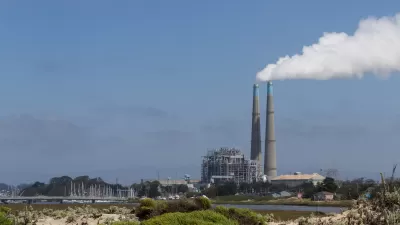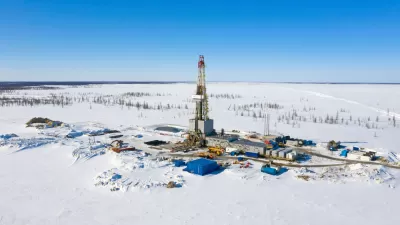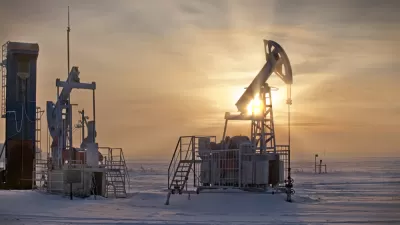The National Academy of Science has released a report showing that health effects from burning fossil fuels cost the economy about $120 billion a year. Global warming was not included due to uncertainty, so it's focused mostly on air pollution.
The report, ordered by Congress, focuses almost exclusively on coal and oil, with the former accounting for $62 billion in 'hidden costs' per year. Electricity generation, heating and driving are the main activities studied. Heavy-duty trucks were included but trains, ships, and planes were not.
"The largest portion of this is excess mortality - increased human deaths as a result of criteria air pollutants emitted by power plants and vehicles," said Jared L. Cohon, president of Carnegie Mellon University in Pittsburgh, who led the study committee.
Coal burning was the biggest single source of such external costs . The damages averaged 3.2 cents per kilowatt-hour, compared with 0.16 cents for (natural) gas. But the variation among coal plants was enormous. The worst plants, generally the oldest and burning coal with the highest sulfur content, were 3.6 times worse than the average, with a cost of nearly 12 cents per kilowatt-hour (which is more than the average retail price of that amount of electricity)."
From National Academies press release:
"The report assesses what economists call external effects caused by various energy sources over their entire life cycle -- for example, not only the pollution generated when gasoline is used to run a car but also the pollution created by extracting and refining oil and transporting fuel to gas stations."
Damages From Motor Vehicles and Fuels
"Transportation, which today relies almost exclusively on oil, accounts for nearly 30 percent of U.S. energy demand. In 2005 motor vehicles produced $56 billion in health and other nonclimate-related damages, says the report. The committee evaluated damages for a variety of types of vehicles and fuels over their full life cycles, from extracting and transporting the fuel to manufacturing and operating the vehicle. In most cases, operating the vehicle accounted for less than one-third of the quantifiable nonclimate damages, the report found."
Thanks to Gladwyn d'Souza
FULL STORY: Fossil Fuels’ Hidden Cost Is in Billions, Study Says

Study: Maui’s Plan to Convert Vacation Rentals to Long-Term Housing Could Cause Nearly $1 Billion Economic Loss
The plan would reduce visitor accommodation by 25,% resulting in 1,900 jobs lost.

Alabama: Trump Terminates Settlements for Black Communities Harmed By Raw Sewage
Trump deemed the landmark civil rights agreement “illegal DEI and environmental justice policy.”

Why Should We Subsidize Public Transportation?
Many public transit agencies face financial stress due to rising costs, declining fare revenue, and declining subsidies. Transit advocates must provide a strong business case for increasing public transit funding.

Paris Bike Boom Leads to Steep Drop in Air Pollution
The French city’s air quality has improved dramatically in the past 20 years, coinciding with a growth in cycling.

Why Housing Costs More to Build in California Than in Texas
Hard costs like labor and materials combined with ‘soft’ costs such as permitting make building in the San Francisco Bay Area almost three times as costly as in Texas cities.

San Diego County Sees a Rise in Urban Coyotes
San Diego County experiences a rise in urban coyotes, as sightings become prevalent throughout its urban neighbourhoods and surrounding areas.
Urban Design for Planners 1: Software Tools
This six-course series explores essential urban design concepts using open source software and equips planners with the tools they need to participate fully in the urban design process.
Planning for Universal Design
Learn the tools for implementing Universal Design in planning regulations.
Smith Gee Studio
Alamo Area Metropolitan Planning Organization
City of Santa Clarita
Institute for Housing and Urban Development Studies (IHS)
City of Grandview
Harvard GSD Executive Education
Toledo-Lucas County Plan Commissions
Salt Lake City
NYU Wagner Graduate School of Public Service





























